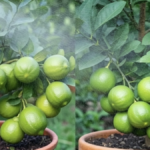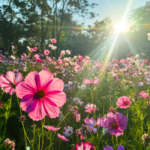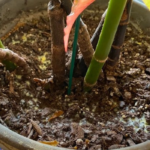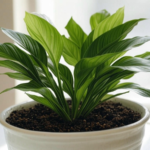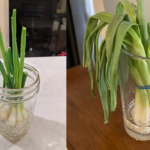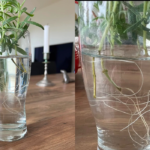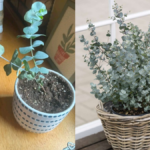How Much to Water Aloe Vera – Aloe vera does not need too much water. Based on my own gardening experience, the right way to water aloe vera is to wait until the soil becomes fully dry. In most cases, this means watering it once every 10 to 15 days in summer, and only once every 3 to 4 weeks in winter. Overwatering can cause root rot and kill the plant.
I’ve been growing aloe vera in my home garden for many years. In the beginning, I used to water it just like other plants, but slowly I understood that aloe vera is different. Now, I water it only when needed, and it stays healthy. In this post, I’m sharing everything I’ve learned through my own experience.
IN THIS ARTICLE
Quick Tips for How Much to Water Aloe Vera
- Water aloe vera only when the soil is completely dry.
- Check soil dryness by inserting your finger about 2 inches deep.
- Always use a pot with proper drainage holes to avoid waterlogging.
- Water the soil directly, not the leaves.
- Let the excess water drain out from the bottom of the pot.
- Do not let the pot sit in water.
- Reduce watering during the winter months.
- Water in the morning time so the soil dries faster during the day.
How Often to Water Aloe Vera – Season-Wise Guide
Summer (Hot Season)
- Soil dries faster in summer.
- Water the plant once in 10 to 15 days.
- Always check the soil before watering – don’t water by date.
- If the plant is kept outdoors in full sun, it may dry more quickly.
Winter (Cold Season)
- Aloe vera goes into a rest phase in winter.
- Watering should be very less, only once in 20 to 30 days.
- Cold and wet soil can cause root rot, so be careful.
- If your plant is indoors and the weather is very cold, wait even longer between watering.
Rainy Season
- If kept outside, the plant can get overwatered by rain.
- Shift the plant to a covered place during heavy rains.
- Do not water manually if the soil is already moist due to rain.
Step-by-Step: How I Water My Aloe Vera
- First, I check the soil dryness using my finger.
- If the soil feels dry at 2 inches depth, I prepare to water.
- I use a small watering can to slowly pour water around the base of the plant.
- I avoid watering on the leaves to prevent rot or fungus.
- I make sure the excess water drains out from the pot.
- I never let the pot sit in a plate full of water.
Signs That You’re Overwatering or Underwatering
| Condition | Symptoms from My Experience | What to Do |
|---|---|---|
| Overwatering | Leaves become yellow, soft, or mushy | Stop watering, dry out the soil completely |
| Underwatering | Leaves look thin, dry, or curl inwards | Water the plant and monitor changes |
| Root Rot | Leaves fall off, bad smell in the soil | Remove rotted roots and replant in dry soil |
Extra Tips from My Aloe Vera Care Routine
- I never use a spray bottle to mist aloe vera. It doesn’t need it.
- I use clay or terracotta pots, which absorb extra moisture.
- I always keep aloe vera in sunlight, which also helps the soil dry quickly.
- I avoid adding any fertilizer in wet soil – it can harm the plant.
- If I ever water by mistake when soil is still moist, I keep the plant in sunlight for faster drying.
FAQs – Aloe Vera Watering Guide
Can I water aloe vera daily?
No, aloe vera does not need daily watering. It is a succulent and stores water in its leaves. Watering daily will lead to root rot and damage the plant.
What type of pot is best for aloe vera watering?
Use a pot with drainage holes, like a clay or terracotta pot. These pots help remove extra water and prevent root rot.
Conclusion – How Much to Water Aloe Vera
In my experience, less water is better for aloe vera. This plant stores water in its leaves, so it can survive long dry periods. The most important thing is to let the soil dry fully before watering again. Once you understand this simple rule, your aloe vera will grow beautifully.
Watering aloe vera is not difficult, but you have to be careful and observe your plant. I hope my real experience helps you care for your aloe vera in the right way
Read more Post
How to Take Care of an Aloe Vera Plant (From My Years of Experience in Gardening & Farming)

